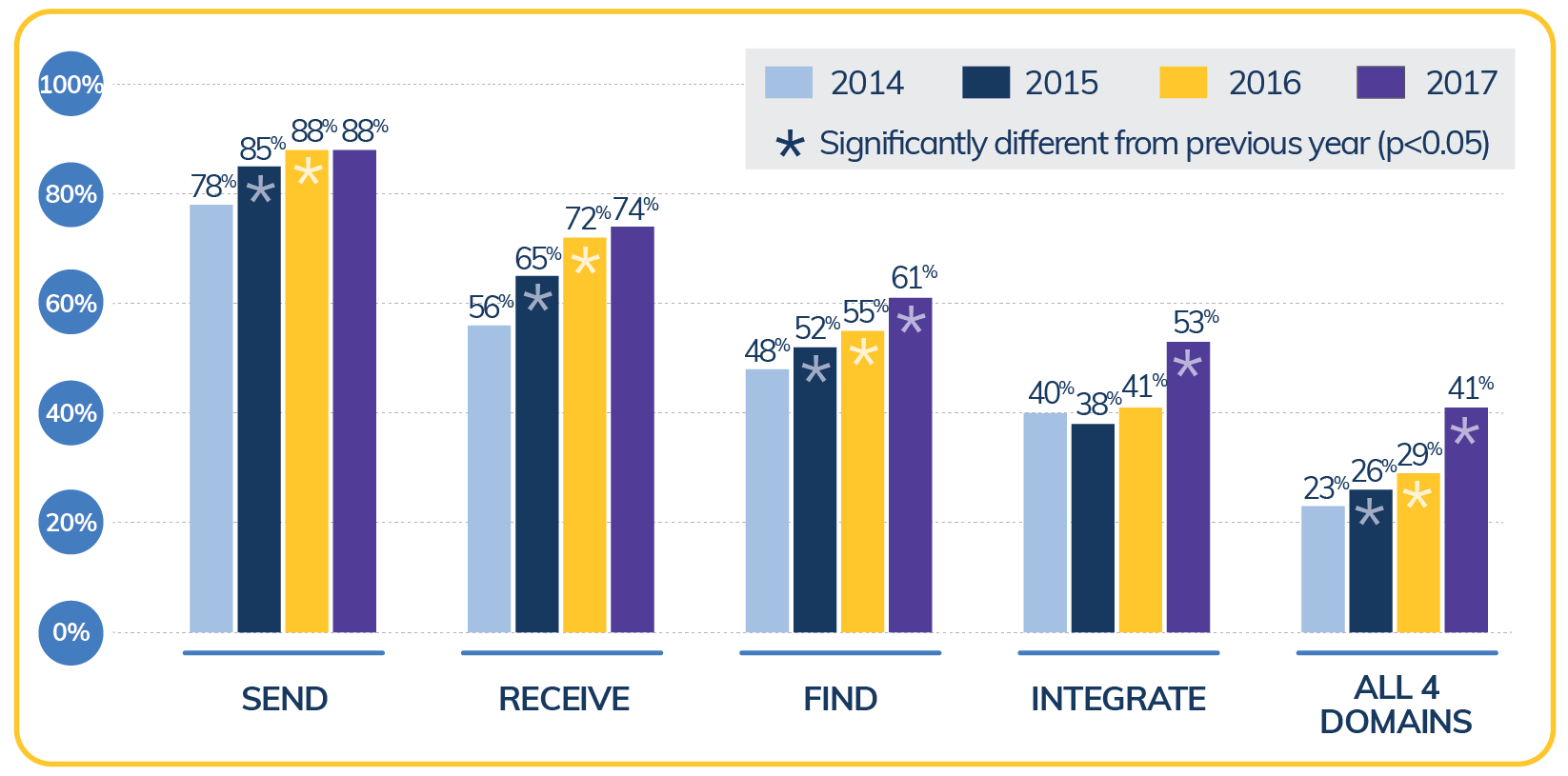Acute Care Hospitals Are More Interoperable Than Ever but Challenges Remain
Don Rucker and Talisha Searcy | October 25, 2018
Today, nearly all non-federal acute care hospitals have adopted certified health IT. New data show that this momentum continues with the introduction of the 2015 Edition Health IT Certification Criteria (2015 Edition), which includes new technical capabilities (such as application programming interfaces) that were not required as part of the prior 2014 Edition. The Office of the National Coordinator for Health Information Technology’s (ONC) analysis of 2017 data from the American Hospital Association’s Information Technology Supplement Survey reveals that 93 percent of non-federal acute care hospitals have already upgraded to the 2015 Edition or plan to upgrade.
Our analysis also shows that hospitals are electronically sharing more patient data than ever before. Most hospitals can electronically send patient summary of care records (88 percent) and receive such records from outside sources (74 percent). Also in the past year, hospitals that reported they can query or integrate this data significantly increased (Figure 1). Hospitals engaged in all four interoperability domains – electronically sending, receiving, finding, and integrating – increased 41 percent since 2016. While this growth is impressive, important work remains, as only four-in-ten hospitals reported they can find patient health information as well as send, receive, and integrate patient summary of care records from sources outside their health system.
Engaging in all four interoperability domains is critical to ensuring that clinicians have information they need at the point of care. In 2017, 83 percent of hospitals that could send, receive, find, and integrate outside information also reported having information electronically available at the point of care. This is at least 20 percent higher than hospitals that engage in three domains and almost seven times higher than hospitals that don’t engage in any domain.
Despite non-federal acute care hospitals’ progress leveraging health IT, more can be done to address interoperability barriers and inject market competition back into healthcare. In 2016, Congress passed the 21st Century Cures Act, which requires the Department of Health and Human Services (HHS) and ONC to improve the interoperability of health information. As highlighted in Achieving the Interoperability Promise of 21st Century Cures, ONC has a number of policy efforts underway to implement Title IV of the Cures Act. ONC looks forward to continuing our engagements with the health IT community on accelerating interoperability progress.
Figure 1: Percent of U.S. non-federal acute care hospitals that electronically find patient health information, and send, receive, and integrate patient summary of care records from sources outside their health system, 2014-2017.
SOURCE: 2014-2017 AHA Annual Survey Information Technology Supplement.
NOTES: *Significantly different from previous year (p<0.05).



